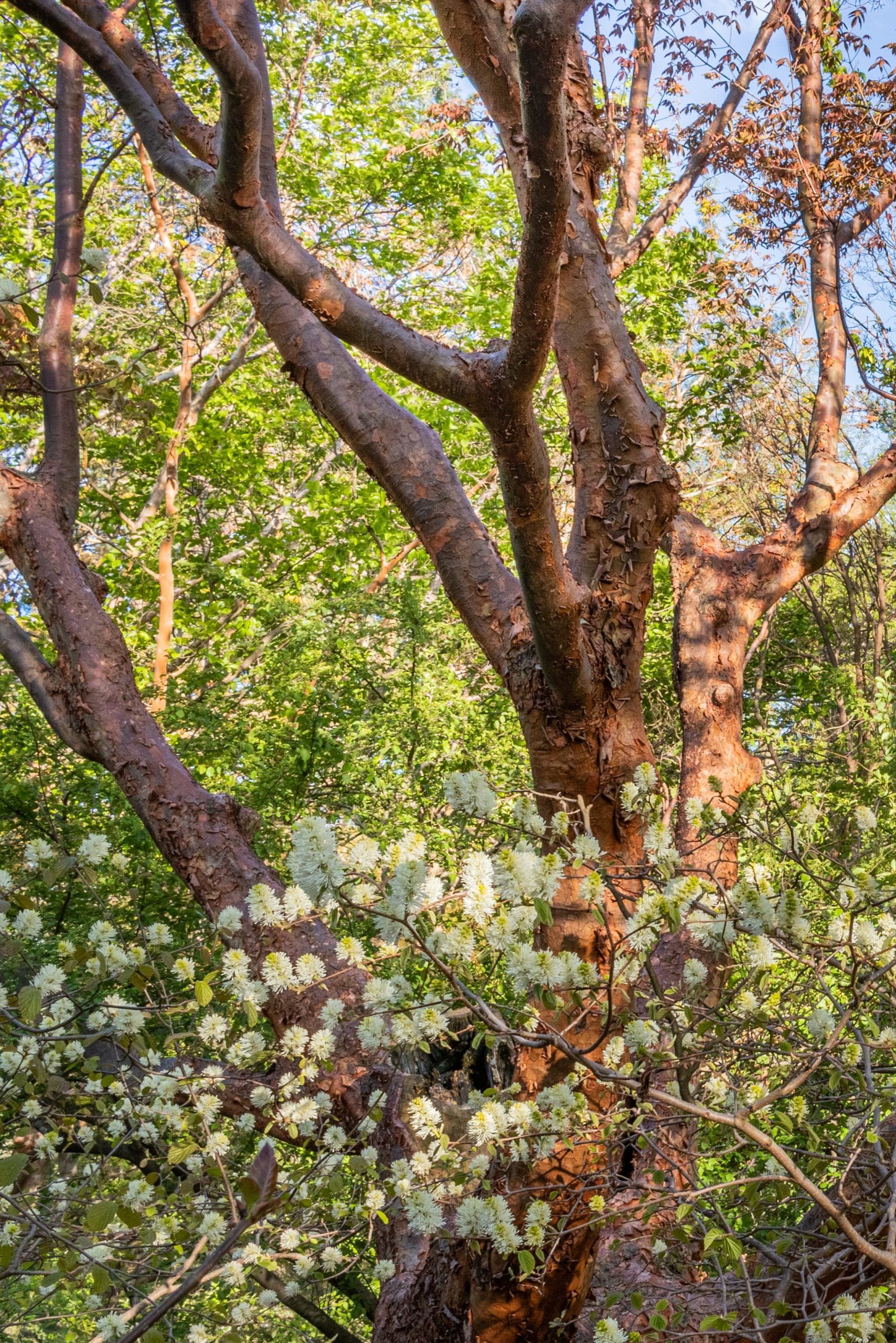
WILSON, E. H. 719
E. H. WILSON, ARNOLD ARB.
The paperbark maple is endangered in its native China. The Arboretum has been active in its conservation for more than a century.
Paperbark maple is an iconic Chinese species. It’s admired for its luminous, copper-colored bark, compact structure, and stunning fall color. Despite the rarity of this tree in the wild, it has become a common highlight among public gardens and parks throughout the temperate world.
The species was first introduced in the United States and Europe by plant explorer Ernest Henry Wilson. He sent seed from Hubei Province to an English nursery in 1901.
This tree, accession 12488*B, was collected on a follow-up expedition for the Arnold Arboretum in 1907. During that expedition, Wilson dug two seedlings from a woodland north of Yichang and shipped them to the Arboretum. Both seedlings thrived. The second tree from that 1907 expedition grows on the edge of the primary maple collection, near the Bradley Rosaceous Collection . They are now considered among the oldest of their kind growing outside of China.
For years, paperbark maples cultivated in the United States were all descended from Wilson’s early 20th century introductions. This made the trees more susceptible to pest or disease outbreaks and less likely to survive in varied climates. So, in 1994, Arboretum collector Peter Del Tredici collaborated with colleagues from other botanical gardens to reintroduce this species from China.
The species was the target of an expedition to Hubei with the North America-China Plant Exploration Consortium—or NACPEC. One of the collectors, Paul Meyer, would later write of the successful expedition that “of the many hundreds of plants I have observed and collected in China, none were more exciting than finding a grove of wild paperbark maple.”
The paperbark maple is now endangered in its native China. That designation makes it even more essential to grow and safeguard wild-collected specimens in places like the Arnold Arboretum, where we keep precise records about the native habitat. Intentional cultivation of an endangered species outside of its native habitat is known as ex situ conservation.
In 2015, NACPEC partners embarked on a plant collecting trip aimed at sampling many of the known populations of paperbark maple in China. The collectors’ zigzagging route covered over 2,200 miles. Trees from that expedition are currently growing in the Arboretum’s nursery.
Visiting the Arboretum’s landscape with your family to see this tree for yourself? Download a printable guide in English or Spanish.
Click here to read a transcript of the audio segment below.
Arboretum scientist Peter Del Tredici collected a newer accession of paperbark maple, 767-94*A, on a mountainside in central China. Hear the story below.
China
Viewing this plant in-person? Look for these defining characteristics:
1

2

3

4

About Our Collection
Fun Facts
Stats
- Living Specimens
- Specimens Dead or Removed
- First Addition
- Most Recent Addition
- Tallest Specimen








25 Living Specimens
| Plant ID | Accession Date | Received As | Origin | Source |
|---|---|---|---|---|